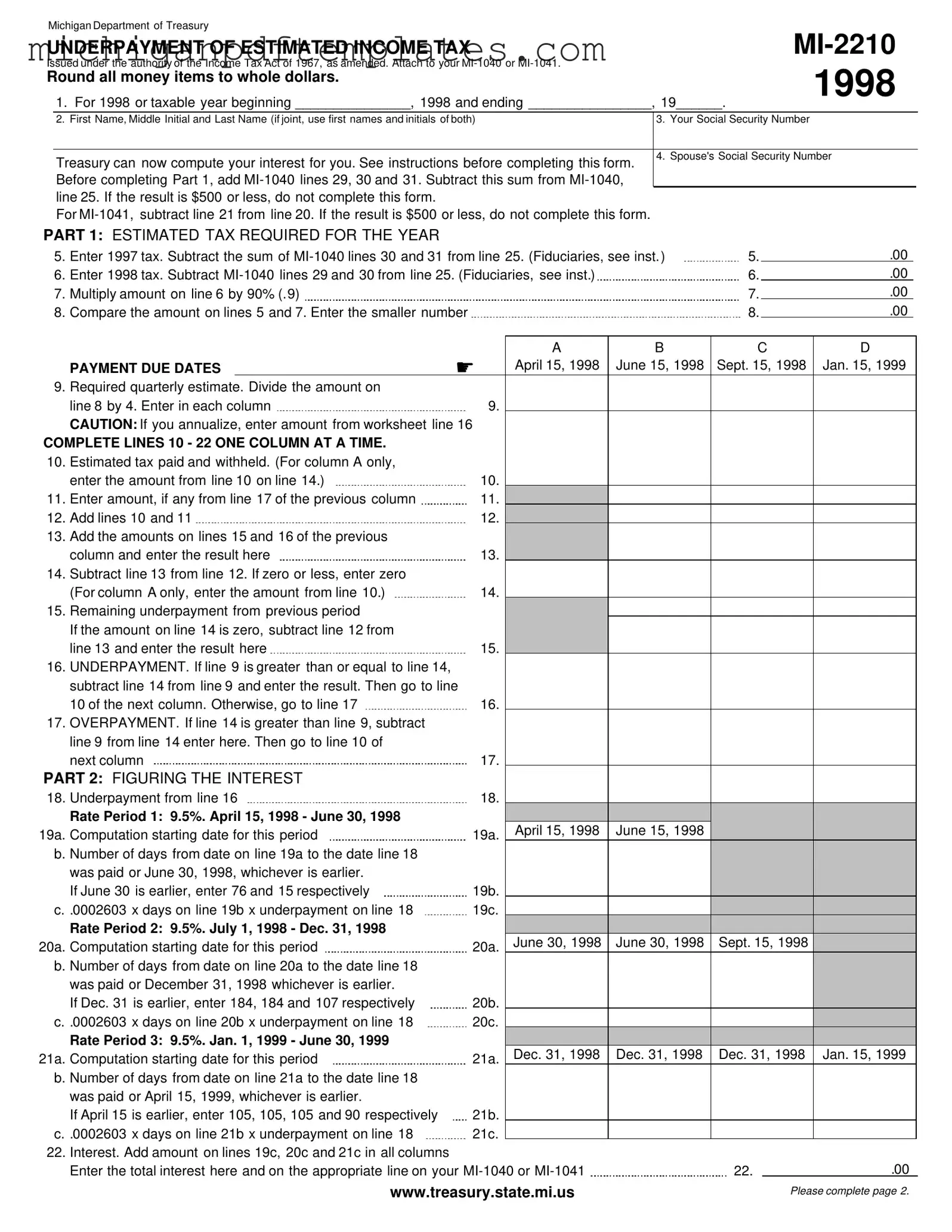The Michigan MI-2210 form is an essential tool for taxpayers who may have underpaid their estimated income taxes throughout the year. This form, issued by the Michigan Department of Treasury, helps individuals and fiduciaries determine whether they owe any penalties or interest for not meeting their estimated tax payment obligations. When completing the MI-2210, taxpayers will need to provide details about their income, including previous tax amounts and payments made. It requires careful calculations to assess underpayments for each quarter and figure out the applicable interest rates and penalties. The form also offers guidance for those who have uneven income throughout the year, allowing them to annualize their income for more accurate reporting. By attaching the MI-2210 to their MI-1040 or MI-1041, taxpayers can ensure they are compliant with Michigan's tax regulations and avoid any unexpected charges when filing their annual returns.
